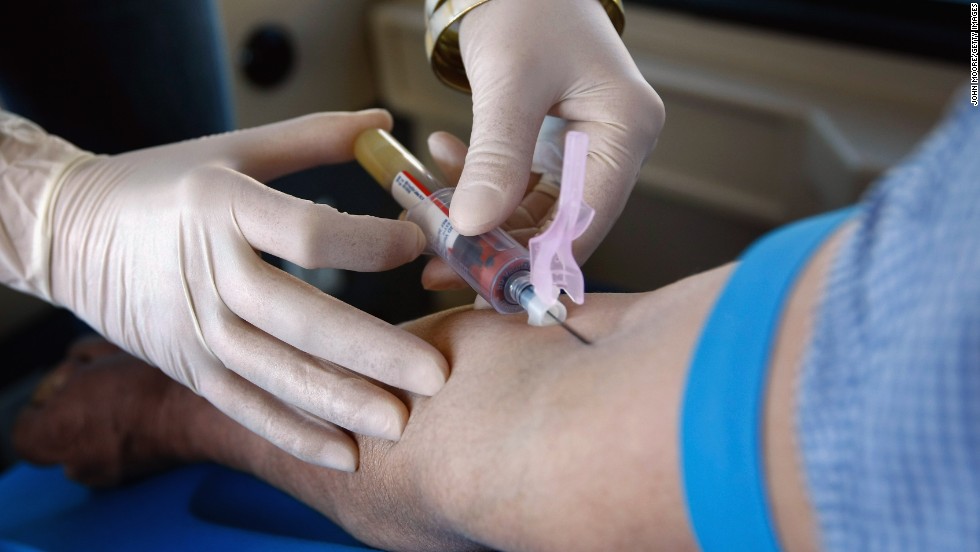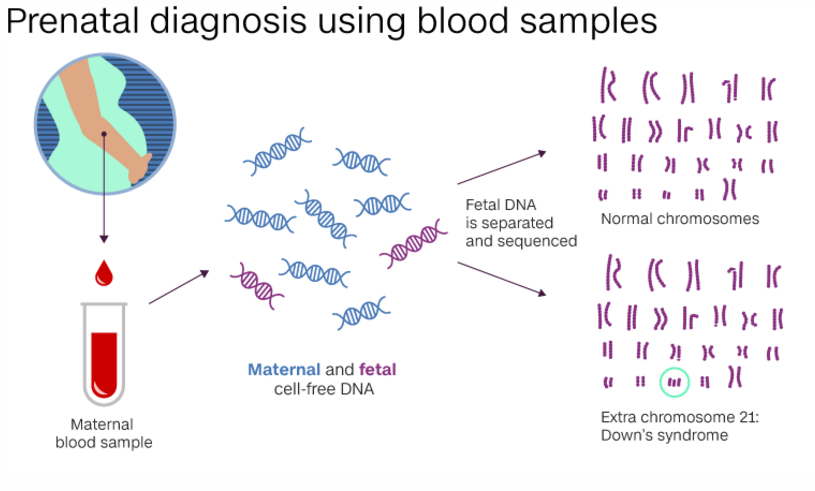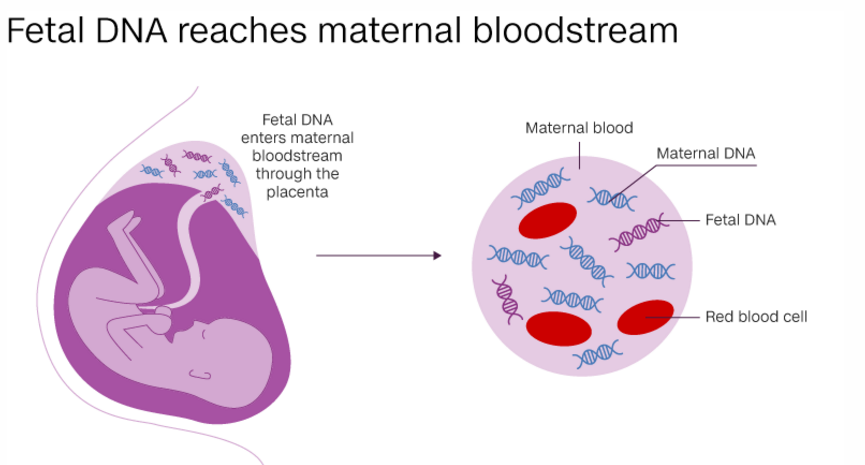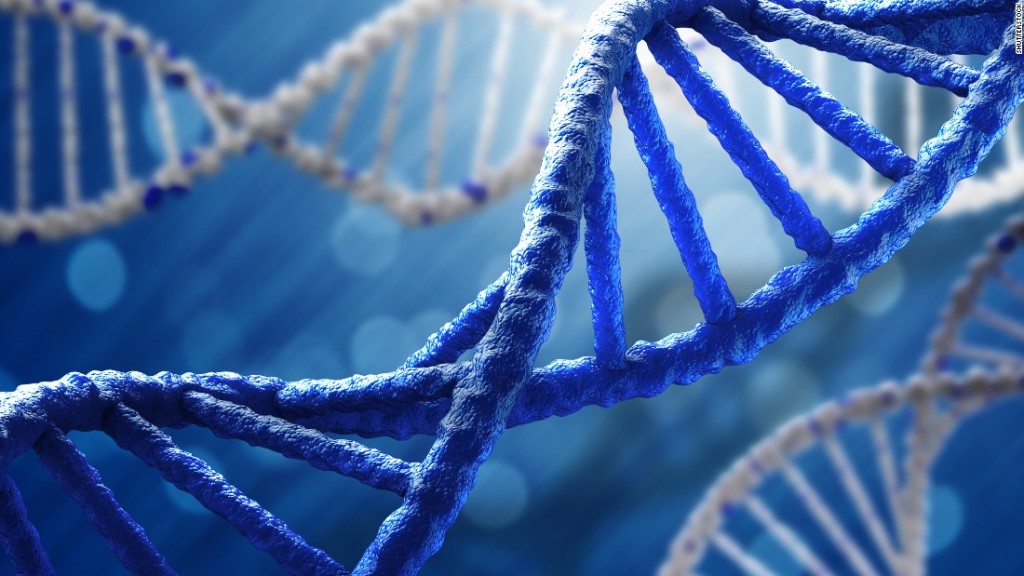A blood test before birth could predict your medical destiny

It was just after midnight on an autumn evening in 1996 when Yuk Ming Dennis Lo made a discovery he knew would change modern medicine.
Lo had discovered a "treasure trove" of valuable DNA floating freely in the bloodstream.
His breakthrough would one day make it possible for pregnant women to safely screen their unborn children for genetic conditions, to map out the entire genome of their fetus, and potentially screen all ages for cancer at its earliest stages.
All using a simple blood test.
The secrets in our blood
Lo's first discovery was that the DNA of an unborn baby floats freely in its mother's blood plasma — the yellow liquid that holds blood cells in suspension.
That DNA, he knew, was a window into an unborn baby's health, and future.
But, at the time of his discovery, the medical world wasn't interested.
"They thought that you could only use it for sex selection," says Lo, now the Director of the Li Ka Shing Institute of Health Sciences, in Hong Kong. This was deemed by experts to be a narrow application and one filled with ethical problems, according to Lo.
The medical world had missed what would become one of the 21st century's biggest breakthroughs.
But this didn't stop Lo.
His beginnings
Lo's quest to find fetal DNA in the mother's blood had begun at Oxford University, where he met pioneering scientist Professor John Bell.
"I heard him give a lecture about the polymerase chain reaction (PCR). He said this technique would change the world," recalls Lo, now 52.
PCR is a technique used to amplify a single piece of DNA into thousands, or even millions, of copies.
Lo learned how to use the cutting-edge technology, and soon after searched for a way to apply it.
His goal? A safer, non-invasive, test for Down syndrome.
Removing the risks
The traditional test for many mothers-to-be was to undergo a procedure called amniocentesis, where fluid is extracted from the amniotic liquid surrounding a baby in the womb. The cells within the fluid are then screened for health conditions, such as Down syndrome.
"A big needle had to be inserted through the mother's tummy into the uterus," says Lo.
The procedure carries an estimated 1 in 100 chance of causing a miscarriage, according to the UK National Health Service.
"I wondered, why did doctors do such a dangerous procedure? How about [we] just take a blood sample from the mother?" says Lo.
Science, however, had to catch up with his ambition: During this time as a student in the 1980s, the blood of a baby and its mother were believed to be separate.
Lo began an eight-year search for fetal DNA inside a mother's blood cells. But the number of fetal cells that enter this part of the maternal blood turned out to be very small, and the search had to be called off.
In 1997, it was time for a change.
Written in the molecules
Lo returned to Hong Kong in what became a historic year for both man and city: the British colony was returned to China and Lo would get his epiphany.
Three months before his move, Lo had read about cancer patients found to have DNA from their tumors floating within their blood plasma.
Scientists had realized that dying tumor cells can release their DNA into the circulation of patients, known as circulating tumor DNA (ctDNA). This opened up the idea of non-invasive cancer diagnosis.
"I thought a baby growing inside a mother is like a cancer growing inside a patient — except I've never seen an eight pound tumor," says Lo.
"If a small cancer can release enough DNA for us to see, maybe a baby can, too."
His goal required Lo to figure out just how to extract DNA from blood plasma — and he found inspiration in an unlikely source.
"When I was in the UK, I would cook instant noodles, you boil the soup and add the noodle dish … I thought the simplest way to treat plasma would be to boil it."
And it worked.
Boiling the sample destroyed proteins in the plasma — which could digest, and destroy the DNA — but the DNA was left unharmed.
Lo tested the mother's blood plasma for fetal DNA, and his first result was staggering.
"I could not believe my eyes — the fetal DNA we had been looking for in the mother's blood was in the part we had not looked in for eight years."
It had been hiding there all along.
Bringing the discovery to market
Years passed without Lo's breakthrough finding any real audience or application.
"The big prize, the medical world thought, would be if you could use that for testing for Down syndrome," Lo remembers.
Down syndrome is caused by a fetus having an extra copy of chromosome 21. Traditionally, the condition was diagnosed by looking at cells from a fetus and counting the chromosomes.
Scientists didn't believe a diagnosis could be made using cell-free DNA (cfDNA).
But Lo proved them wrong.
After another decade of dedication, in 2007, his team showed that due to the extra copy of chromosome 21, the number of molecules produced from this chromosome are increased in the mother's blood plasma if she is carrying a baby with Down syndrome.
"People thought we were crazy because that method meant you'd have to do several PCR tests," says Lo.
The amount of fetal DNA in the plasma, he says, is low, so several amplifications are needed to create enough data to analyze.
The expense of this meant that wouldn't be practical. At least not then.
Luckily for Lo, the introduction of next generation sequencing in 2008 meant millions of DNA fragments could be produced in rapid time.
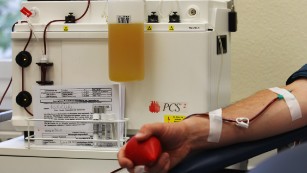
In 2011, Lo launched his non-invasive prenatal blood test for Down syndrome and today, the test is available in more than 90 countries. The last time anyone counted, more than two million pregnant women had been tested.
Right from the beginning, Lo says he was "very conscious about the ethical implications." When he licensed his technology he did so with a clause firmly in place, prohibiting its use for sex selection.
A controversial market exists in Hong Kong for prenatal gender testing as blood tests are far more conclusive in the early stages than ultrasounds. The tests cater largely to clients from mainland China where couples have a preference for sons, and where prenatal gender tests are illegal but abortions are not.
Limitless possibilities
Lo soon discovered that the secrets held by just a few drops of blood are almost limitless.
Prenatal sequencing of the entire genome could, in the future, screen an unborn baby for various late onset disorders, gene defects — including the breast cancer gene BRCA1 — and even predict hair color or longevity.
According to Lo, the prohibitively expensive cost means such tests are not being performed right now.
"We've basically created … a non-invasive window to the body."
Политика конфиденциальности | Правила пользования сайтом
